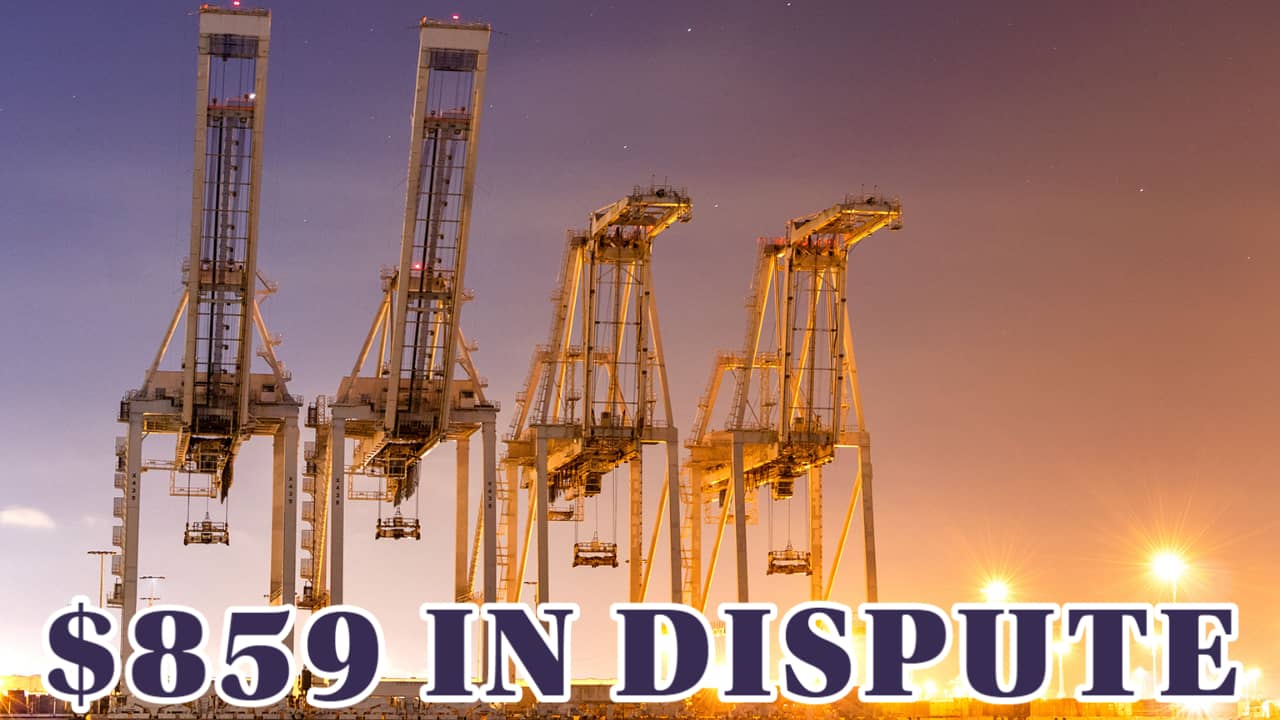
Who Should Pay for These Extra Costs and How to Avoid Them
4-minute read
In mid – July a freight forwarder filed a container pre-receival advice to DP World Australia at Melbourne port, and while doing so made a typo error with the weight, missing out a “zero” numeral …
This meant that the weight of the box was being incorrectly declared as 1,800 kg instead of its true weight of 18,000 kg — in other words, incorrect by 16.2 tonnes.
This kicked off a chain of events in which the forwarder was charged a total of A$859.
Four charges were involved in reaching that amount. A charge of A$220 was made for receiving the box and then short-shipping it.
A second charge of A$98 was made to cover two-yard moves, as the box was shifted around in the terminal.
A third charge of A$231 was made for two storage days and finally the fourth charge was A$210 to cover the trucking costs to take the box out of the terminal.
Fair or not? Interestingly, the debate has seen comments made from both sides of the argument.
One viewpoint is that the error “could have been fixed with the stroke of a pen” and that the total charge amounts to a blatant rip-off.
The stevedore is depicted as having pounced on a human error and made a killing.
The alternative viewpoint is that the fault was purely the shipper’s, and that it’s entirely the shipper’s action that triggered the chain of events.
This is indeed the argument DP World Australia has made in defence of its actions.
It has stated that the onus on weight verification is the responsibility of the shipper, packer or freight forwarder of the goods and importantly, that “DP World Australia is not in a position to make a change to the stated weight of a container on behalf of any party”.
So the box had to be removed, and the weight rectified, prior to re-entry and loading under new SOLAS requirements.
On this score, I side with the stevedore. It would not have legal power to arbitrarily go in and alter the weight of a box for which someone else had given the VGM.
To suggest that DPWA could have taken some kind of corrective action is a throw-back of 20 years or more to a non-digital age of paper transactions, and figures being entered by pen on paper.
Even if DP World Australia personnel had suspected an error, and were legally able to change the figure, what weight would they have entered?
Without actually weighing the box, there’s no way they could put any verified figure in.
It’s a bit like you or I mis-typing a figure in an Internet banking transaction, accidentally paying too much and then thinking the banking system should have realised we’d made an error.
The fault would be ours alone.
Also remember that without a correct VGM, the box cannot be loaded under the new SOLAS rules. The stevedore has no discretion with that.
The question then arises, if DPWA is absolved from criticism for the process, were the actual levels of charges unfair?
Looking at the four listed above, the only one I’d query is the $220 for receiving the box and then short-shipping it.
DPWA justifies this by saying it was forced to do extra work, not just the physical moves for which it made a charge but also having to liaise with the shipping line to bump the box which had been booked for a particular sailing, plot the box move into and out of storage and make the arrangements for transport out of the yard.
It also missed the revenue opportunity to load that container.
Finally, let’s ask the question — once DPWA knew there was an error of some kind, couldn’t it have just contacted the forwarder, and got them to change the declared weight?
That situation is covered by an advice which was given by another stevedore, Asciano, and which probably summarises the attitude of all stevedores.
It said that if a shipper wishes to amend a weight after the container has been received at the terminal, the container will be placed on hold and moved into storage.
The container must then be taken out of the terminal via the [Australian] Customs Release process, and a new pre-advice receival is to be submitted with the new VGM.
Obviously, costs would be involved in that, and the shipper has been pre- warned of the process that will be followed.
The moral of this story for all shippers is clear — get the VGM right first time. If you don’t, there will be costs that come to account for you, one way or another.
Source: NZ Shipping Gazette
We’d love to answer any of your questions! Contact us now.
P.S. Do you know of other people that will find this article useful? Please share it on social media. Thank you!
